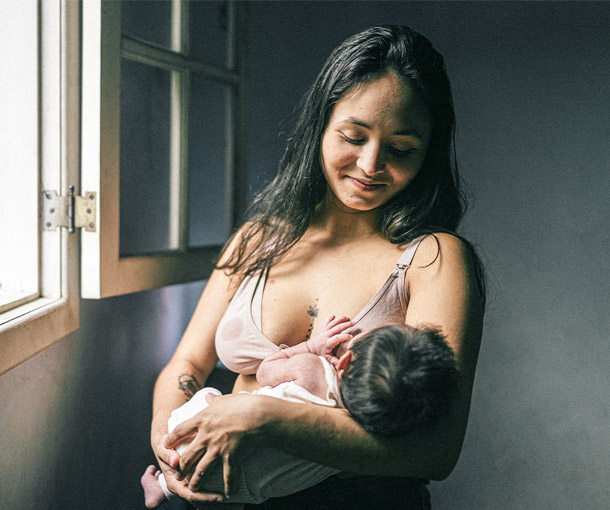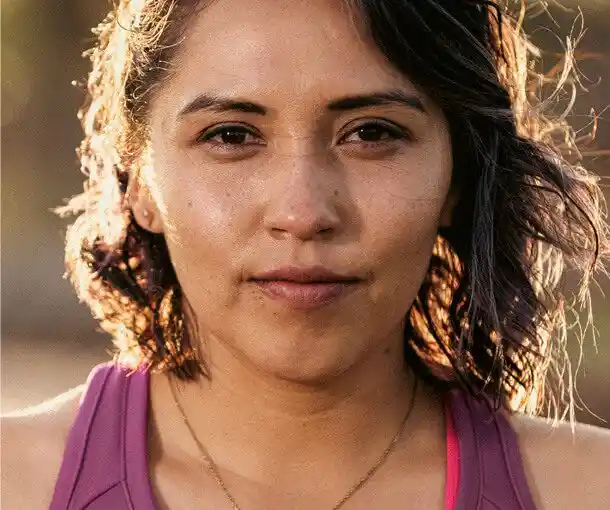During pregnancy and breastfeeding, mothers supply their growing baby with calcium and vitamin D to support healthy bone development. Find out more about calcium and vitamin D during pregnancy and breastfeeding.
3 Things you need to know about calcium & vitamin D during pregnancy & breastfeeding
- During pregnancy, mothers supply all nutrients, including calcium and vitamin D, to their baby.
- Mothers need to ensure they meet the recommended dietary intake for calcium during pregnancy and breastfeeding, and ensure they have sufficient vitamin D levels. Many Australian adults do not get enough calcium and/or vitamin D.
- Dairy foods are a good source of calcium, and the main source of vitamin D is through healthy exposure to sunlight.
How do calcium needs change during pregnancy?
- During pregnancy, a mother supplies her growing baby with calcium, mostly during the third trimester.1
- A mother’s body absorbs calcium from food more efficiently during pregnancy, so the amount of calcium needed in the mother’s diet is the same as for other adults of the same age 1,2
- 73% of Australian women do not get enough calcium in their diet.6
How do calcium needs change during breastfeeding?
- A newborn baby’s bones continue to develop after birth, doubling in mass over the first year. Calcium is essential to support this rapid growth1 and strengthening of the bone.
- On average, a baby needs 30 g of calcium during the first 9 months of life, which can be supplied from their mother’s milk during breastfeeding1 or from infant formula.
- Most of the calcium in breastmilk comes from the mother’s bones, rather than from calcium in the mother’s diet.1 A breastfeeding mother’s bones become slightly thinner and weaker at this time1, although supplementation does not prevent this from happening, it is a natural occurrence that a mother’s body is well equipped to support. In saying that, it is an important time for a mother to ensure adequate calcium intake to prepare her body for the rapid transfer in the 3rd trimester and during breastfeeding.2
- After a baby is weaned, the mother’s bone density generally returns to normal within 1 year. It is also important that mothers get enough calcium at this time to support optimal bone renewal.1
How do vitamin D needs change during pregnancy?
- Vitamin D is important for healthy bones and muscle function and is needed by both pregnant mothers and their growing baby.4,5 The main source of vitamin D is sunlight – it is made by your skin when exposed to ultraviolet light from the sun.
- The amount of sunshine you need to get enough vitamin D depends on your type of skin and where you live and can vary with the time of day and time of year. Refer to the Cancer Council SunSafe leaflet ‘How much sun is enough’ for more information.
- A pregnant mother supplies her growing baby’s vitamin D needs. Vitamin D levels are slightly lower in the developing baby than the mother, so this is a very important time to ensure adequate Vitamin D status for both mother and baby.
- Talk to your doctor if you are concerned that you may be at risk of low vitamin D levels.
Vitamin D and breastfeeding
- Ensure you maintain your vitamin D levels throughout your pregnancy and when you are breastfeeding.
- Breast milk is the best type of food for babies and is a rich source of many nutrients, but it does not contain much vitamin D.4,5,6
- Talk to your doctor or pharmacist if you are concerned that you or your baby may be at risk of low vitamin D levels.
Can I take supplements during pregnancy and breastfeeding?
Always talk to your doctor or pharmacist before taking any medicines or supplements during pregnancy and breastfeeding.
Disclaimer: This article is meant for information purposes only. Please consult your health professional if you have further concerns or questions related to nutrition requirements during pregnancy and breastfeeding.
References available on request.
MAT-AU-2401872







